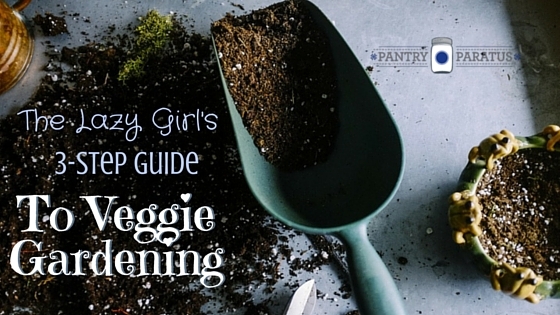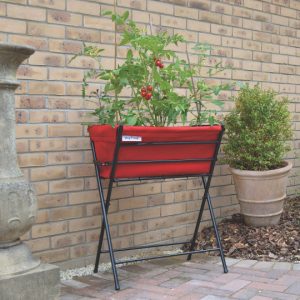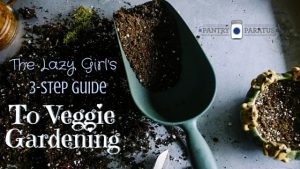
It pains me to say this out loud, but I am insanely lazy. If there is a shortcut to take, you can bet I’ll find it. Luckily, when it comes to gardening, there are a number of plants that acquiesce to my laziness — allowing me to have all the deliciousness of home grown veggies, without the backbreaking labor.
I’m here today to share with you my three step guide to lazy veggie gardening. However, as is so often the case with convenience, this system involves spending some cold-hard cash. If you’re looking for frugal gardening tips, run as fast as you can in the opposite direction!
Grab The Essentials
Soil can be complicated. There are certain types for certain plants, pH balances to assess and adjust, and organic matter to create and incorporate. Generally speaking, all you need for vegetable garden is a soil that’s loose and well draining. To make my life easy — and to get out of any real digging — I buy bagged potting soil specially designed for growing veggies. Look for soil with a mix of peat, perlite, or vermiculite to hold moisture. Oh, a little Miracle-Gro plant food won’t hurt either.
Find a Container
Forget the yard, forget the raised beds, just buy some good containers. Container gardening takes up less space, less soil, and requires far less upkeep. You can use almost any container, as long as it has holes in the bottom for drainage. Seriously, the options are almost endless — lined baskets, ceramic or plastic pots, wooden barrels, planter boxes, etc. You can even use a gutter!

My personal favorite at the moment is the VegTrug Poppy Planter. I have one, and I’m seriously considering buying two or three more.
Plant Easy Veggies
Here’s the thing about lazy veggie gardening — you can’t plant finicky or needy plants. You have to plant veggies that can handle most of the growing business on their own. Here are five veggies that do just that:
- Carrots: All you need is a container deep enough to handle this root vegetable and full sun.
- Cucumbers: Go for a container with a little more room so your cucumbers have ample space to stretch their roots. Avoid planting cucumbers until all danger of frost has passed and give them a little support for climbing.
- Tomatoes: Most people (including yours truly) prefer to buy starter plants from nurseries to start their tomato growing adventures. Give tomatoes full sun, support for their stalks, and plenty of plant food.
- Bell Peppers: Like tomatoes, starter bell pepper plants make growing easy. Make sure they have full sun and throw some tomato cages around them once they start producing.
- Zucchini: Zucchini plants are prolific, even when grown in containers. They even manage to grow easily from seeds. Start growing them late in the warm season and give them plenty of moisture

One important thing to remember about my brand of lazy veggie gardening is that containers lose moisture quickly, especially when placed in full sun. Since the volume of soil is relatively small, you may need to water daily (or even twice-daily.)
I hope you have great success with your gardens this growing season. If you need any tips — or discover any shortcuts — feel free to contact me!

Liz Greene is a dog loving, history studying, pop culture geek from the beautiful City of Trees, Boise, Idaho. You can catch her latest misadventures on her blog, Instant Lo. Read her last piece for Pantry Paratus: Why Keeping Bees Might Be the Best Thing You Ever Did For Your Garden
